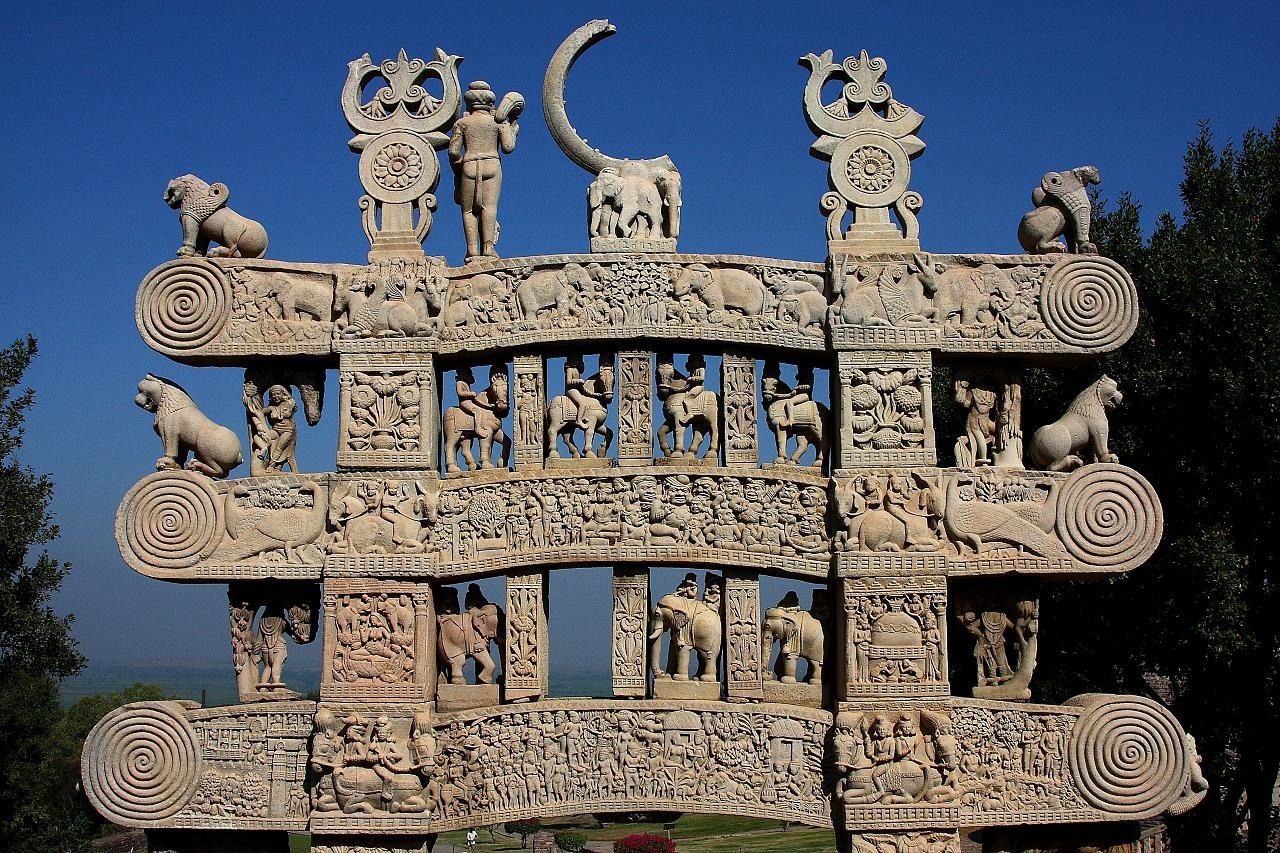The history of Indian art begins with Buddhism. The founder of Buddhist art in India was the greatest Maurya ruler Ashoka. The Buddhist art is represented in the forms of the Stupas, the Viharas, the Chaityas, and the images of Buddha in various postures and the stories of his life engraved on the stone slabs.
Stupa
Stupas were worshiped by Buddhists before the tradition of image worship commenced. Stupas were built over relics of Buddha & Bodhisattva. Bodily remains/items used by Buddha or Bodhisattva were placed in Hermika where the stupa was built. Stupa symbolized death/transience of the world.
Stupa Architecture
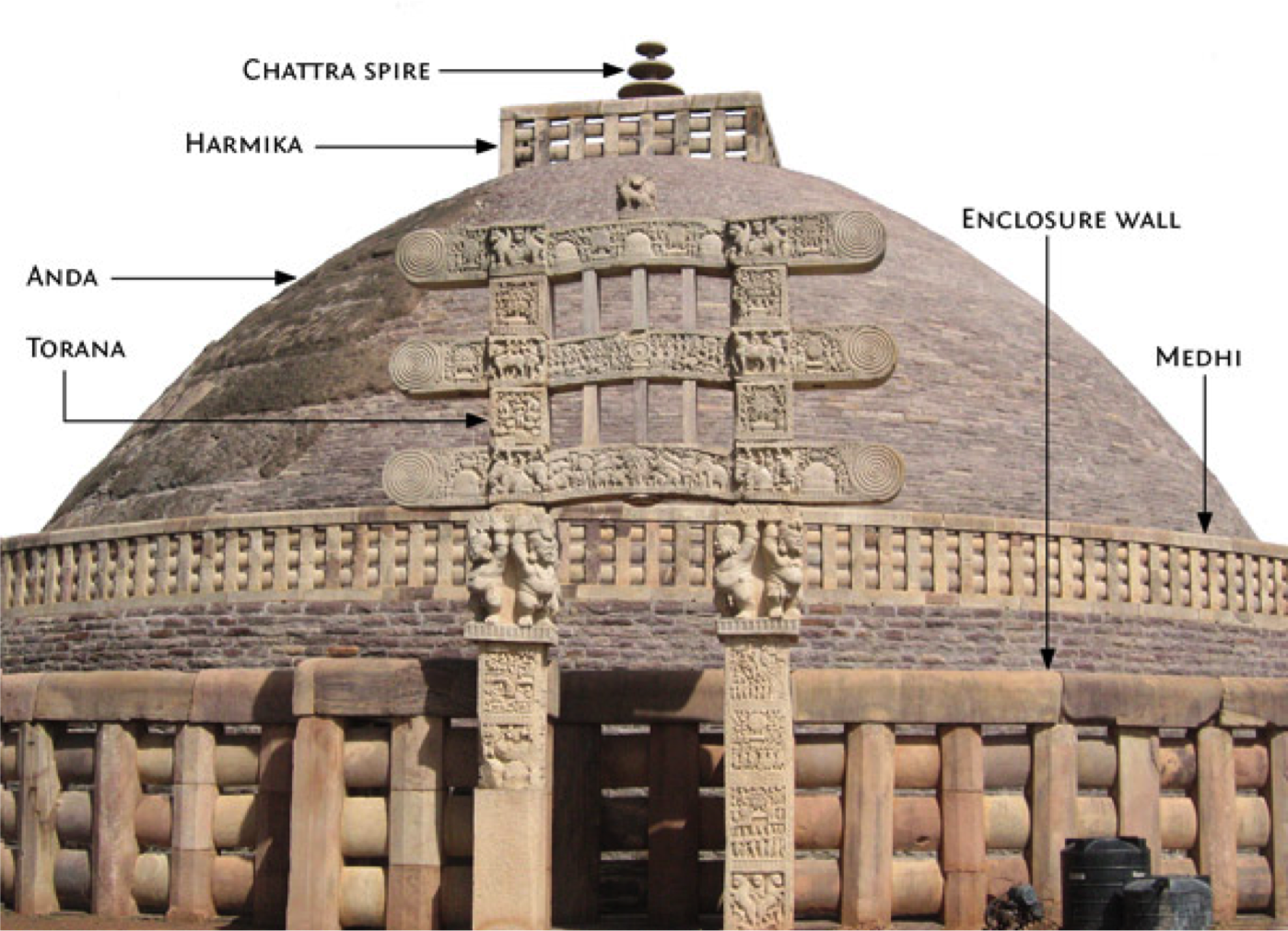
The 1st reference of the word ‘stupa’ is found in Rigveda where the terms are used to referred fare coming out of the Altar (Hawan). It was not for any structure as such. Stupa architecture commenced in the 5th century BC when Mahatma Buddha died, Stupa architecture is an example of Buddhist architecture. Stupas were worshiped by Buddhists before the tradition of image worship commenced.
Stupas were built over relics of Buddha & Bodhisattva. Bodily remains/items used by Buddha or Bodhisattva were placed in Hermika where the stupa was built. Stupa symbolized death/transience of the world.
Types of Stupas
Stupas broadly divided into 5 types known as-- Relic stupa
- Object stupa
- Commemorative
- Symbolic
- Votive
Relic stupas were built on bodily remain (both hair and bone etc.) of Buddha or Bodhisattva. These stupas are considered to be most sacred. Piprahva stupa (location – Siddhartha Nagar district, UP) is an example of Relic stupa. Peshawar stupa erected by Kanishka is an example of an Object stupa which is erected on the begging bowl.
Object stupas built on objects/items used by Bodhisattva. These could be begging bowl. Commemorative stupas were built on the memory of important event associated with the life of Buddha / Buddhism such as; in memory of when Buddha leaving home (Mahabhinish Karma), Buddha attaining enlightenment (Nirvana), Buddha delivering 1st Sermon (Charmachakra parivartana), and in memory of Buddha’s death (Mahapaninirvana). Dharmarajjika stupa erected by Ashoka at Sarnath is an example of a commemorative stupa.
Symbolic stupas were built to symbolize the invisible presence of Buddha. Since Buddha was God, he was supposed to be present everywhere. These stupas didn’t necessarily have relics. Symbolic stupa found in allover India example Sanchi, Sarnath.
Votive stupas were erected at the place of Pilgrimage or near the main stupas. These are small in size when compared with a normal stupa. These were erected by devotee Buddhist / committee Buddhist to earn religious merit. These were also constructed for sake of name & fame by rich people. Votive stupa found at Bodh Gaya, Lumbini, and Sarnath & Kushinagar, etc.
Example of Stupa ArchitectureAccording to the Buddhist text, Mahaparinibbana Sutta at the death of Buddha was cremated at Kushinagar & 8 great stupas were erected by 8 rulers of age over the remains of Buddha. These 8 stupas were erected by King Ajatshatru at Magadha at Rajgirha, by Lichhavi of Vaishali at Vaishali, by Sakyas of Kapilvastu at Kapilvastu, by buliyas of Allakappa (Nepal Terai), by Koliyas of Ramagrama, by Mallas of Pavapur at Pavapur, by Mallas of Kushinagar at Kushinagar, and by Mauryas at Pipplavana (Siddhartha Nagar, UP).
These 8 original stupas were opened by Ashoka & their relics were distributed into 84 thousand stupas build by him as informed by the Buddhist text Avadana sutta. Emperor Ashoka was a great patron of Buddhism. He was a follower of Shaivism before embracing Buddhism. Buddhism was adopted by him after the Kalinga war (Not immediately, after some year). He was converted into Buddhism by Mogaliputta Tissa.
According to some Buddhist text, an 8-year Buddhist monk named Nigrodha converted Ashoka into Buddhism. Ashoka builds 84 thousand stupas as per the Buddhist text, the prominent one was located at Sanchi, Sarnath, Bharhut, Taxila, Amaravati & Tamralipati.
Chinese traveler Hiuen Tsang saw Ashokan stupa at Kapisha (Afghanistan), Tampralipti, Pundravardhana, Karnasuvarna & Samatata (last four in Bengal). During the reign of Ashoka, the stupas were built in bricks (Hemisphere was covered with bricks) & the railing was made up of wood. During the post-Mauryan age, large numbers of stupas were built under the patronage of Kushanas, Satavahanas, Ishavakus & Vakataka.
Kushanas ruled over modern Afghanistan, Punjab & Northern plains up to Mathura. Satavahanas ruled over Deccan. At one time even Sanchi (North of Vindhyas) was under their control. Ishavakus & Vakataka emerged after the decline of the Satavahanas kingdom in Deccan.
During the Gupta period, stupas building activities lost significance. Stupa architecture got replaced by Nagara style temple architecture. Dhamekh stupa of Sarnath is the only example of stupas of the Gupta Age (build by Agnimitra).
Details of Prominent Stupa
Piprahwa Stupa
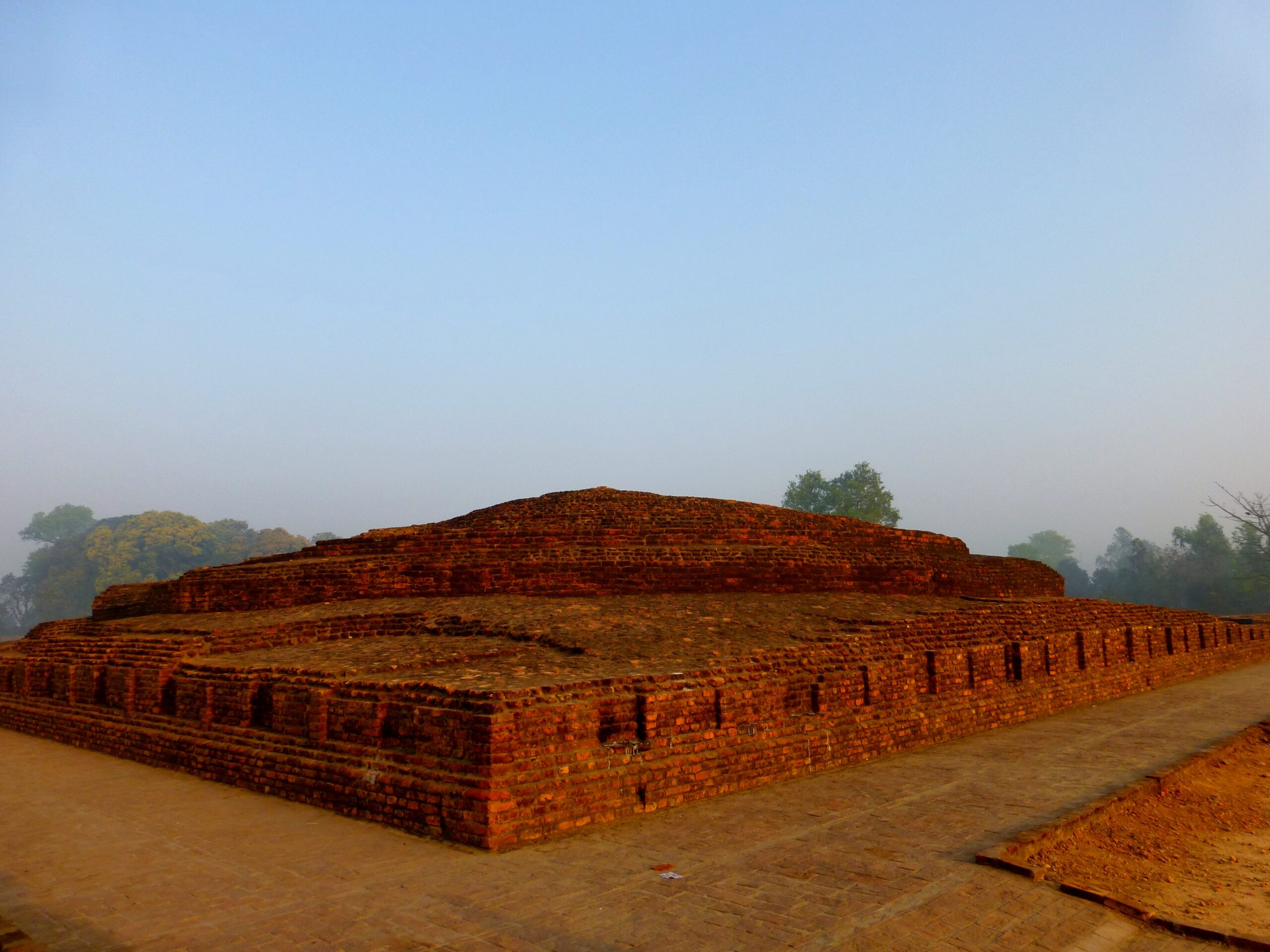
It was discovered by William Claxton Peppe in 1898. He was an officer of the British Indian government. He was the owner of the land where the stupa was located. One day while he was working in his field, he came across relics of the stupa. A further excavation discovered many parts of stupas
Piprahva stupa is considered to be the oldest surviving/known Buddhist stupas. Discovery includes 5 small vases (pot) containing ash & jewels. One vase contains an inscription that reads that ash belongs to Mahatma Buddha.
Bharhut Stupa
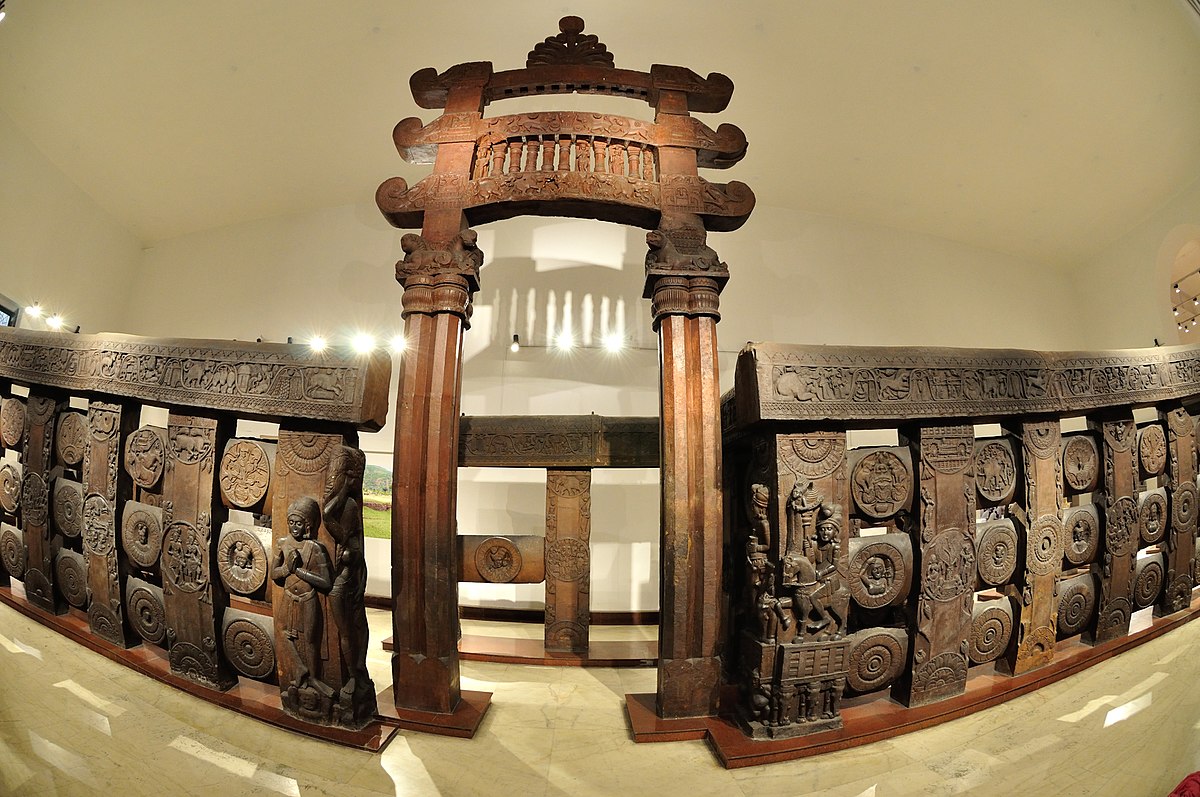
This stupa is located at Satna district, Madhya Pradesh. It was discovered by Alexander Cunningham in 1873. These stupas have got destroyed completely, only its fragments are available. Remains of this stupa are kept in Kolkata, Varanasi, and London & Satna museum.
These stupas were originally built by Ashoka in bricks. The railing was made up of wood. During Shunga, period, stone railings & Tornas were added. One of Torna contains an inscription of Shunga king Dhanabhuti.
Amravati Stupa
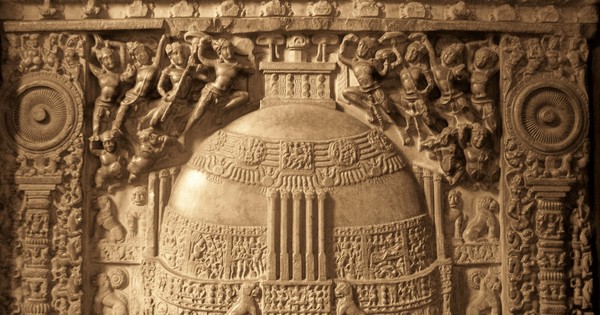
This is located at Guntur district, Andhra Pradesh. In Ancient times, Amravati is known as Dhanyakataka & Dharnikota. Ashoka built stupa here. Another stupa was built during the Satvahana period. This stupa is known as Mahachaitya. Ashokan stupas were repaired by Satvahana king Pulameyi – II in 1st century AD. He erected stone railing around the stupa.
The stupa was built by Ashoka is no more at present. Only its fragment kept in the museum of Kolkata, Madras & London. Amravati stupa was discovered by Col. Colin Mackenzie in 1797. He was an officer of East India Company. On basis of a fragment of stupa seen by him, he prepared the line diagram of Slab & images. This stupa was excavated by Sir Water Elliot in 1840. Ayaka pillar/Stambha was a special feature of Amravati stupa.
Nagarjunkonda Stupa

This stupa is being located at Guntur district, Andhra Pradesh. This stupa was discovered by A.H. Longhurst in 1826. This stupa was built in the 3rd century AD by Ikshavakus King Virpurusha Dutt. Nagarjunkonda was the capital of Ikshavakus. This name is based on the name of a famous. Buddhist monk Nagarjuna was born here. Earlier this place was known as Vijay Puri.
Sanchi Stupa
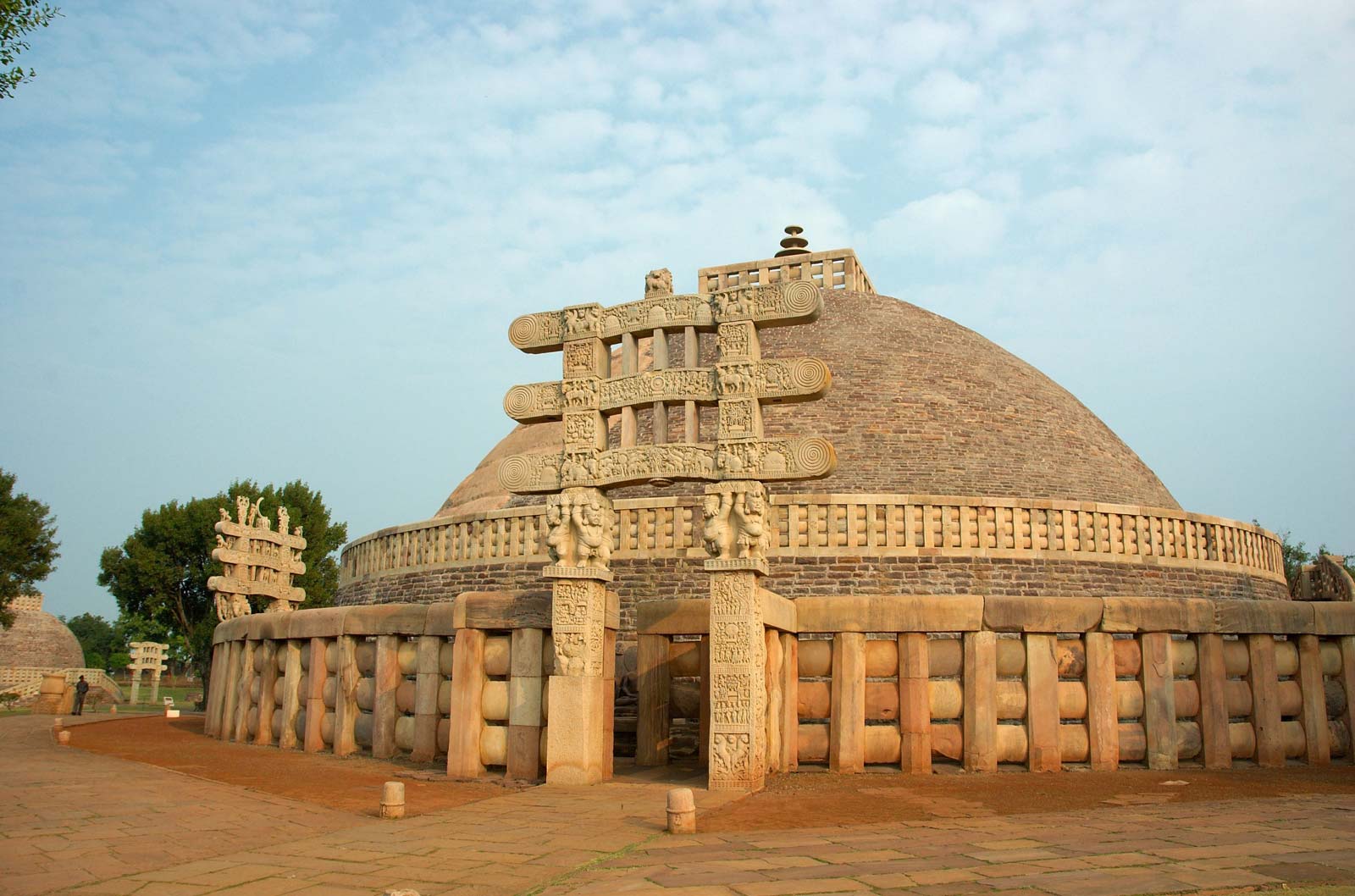
This stupa is located at Raisen district, Madhya Pradesh. There 3 stupas at Sanchi, the total number of monuments at Sanchi are 50. Sanchi stupa was discovered by Sir Herbert Taylor in 1818. Major Col researched Sanchi stupa 1888. He cleared forest near this stupa & erected fallen gateway/Torna.
Ashoka built one of the three Sanchi stupas at Sanchi. It is known as “Mahastupa”. These stupas were built in bricks & their railings were made up of wood originally. It was destroyed almost completely by shunga King Pushymitra Shung. He was the founder of the Shunga dynasty & he was a very strong anti-Buddhist. Buddhist monuments were raised to the ground. He announced a reward of 100 deenar on the head of each Buddhist monk.
Agnimitra, the son & successor of Pushymitra restored Ashoka stupa destroyed by his father. This stupa was enlarged to almost double its original size by adding layers of stone. The wooden railings were replaced with stone railing & Tornas. Sanchi stupa located near Vidisha one of his queens – Devi was from Vidisha. She was the daughter of a merchant of Vidisha. Ashok married her when he was governor of Ujjain. The construction of the Sanchi stupa was overseen by Queen Devi personally. King Agnimitra built 2 new stupas at Sanchi as well.
Sanchi Stupa’s ExcavationSanchi stupas were excavated by General Alexander Cunningham & Frederick Maisey in the 1870s. They took away relics found at Sanchi stupa as a personal trophy. These relics were later sold to the Victoria & Albert Museum, London. These relics were purchased by Shrilankan Buddhism society (Mahaparnibbana Sutta). These were brought back to India. A new structure was built to keep these remains at Sanchi known as Chaityagiri Vihara. These relics belong to Sariputta & Mahamoggallana.
Sariputta was the chief disciple of Buddha. He remembered each & every word whatever Buddha spoke in entire life. He used to explain the word spoke by Buddha. He was raised as the successor of Buddha but unfortunately died within Buddha’s lifetime. Mahamoggallana was another important disciple of Buddha.
Sanchi monument included in the world heritage site list of UNESCO in 1889. The Sanchi stupa is considered to be one of the finest pieces of Buddhist art & architecture. The image was found on Sanchi stupa through light on Buddhism as well as contemporary life. These images depict Buddha in divine forms (Buddha is never represented in human form). Symbols associated with Buddhism (Dharmachakra, Lotus, Horse & Elephants).
Folk deities like Yaksha & Yakshinis are depicted while worshiping Buddha. The significance of their depiction lies in the fact that Buddha was portrait higher than folk deities. Through these depictions, people were convinced that Buddhism was superior to their religion. It was a way of spreading Buddhism. Jatka stories (stories of the previous life of Buddha) are also depicted in images. Men, women, birds, animal throwing light on the common man is also depicted. Buddha was depicted while performing various types of miracles. These images not only through light on the Buddhism life of Buddha, the life of common people of age but also these are the finest pieces of art.
Chaitya- Place of Worship
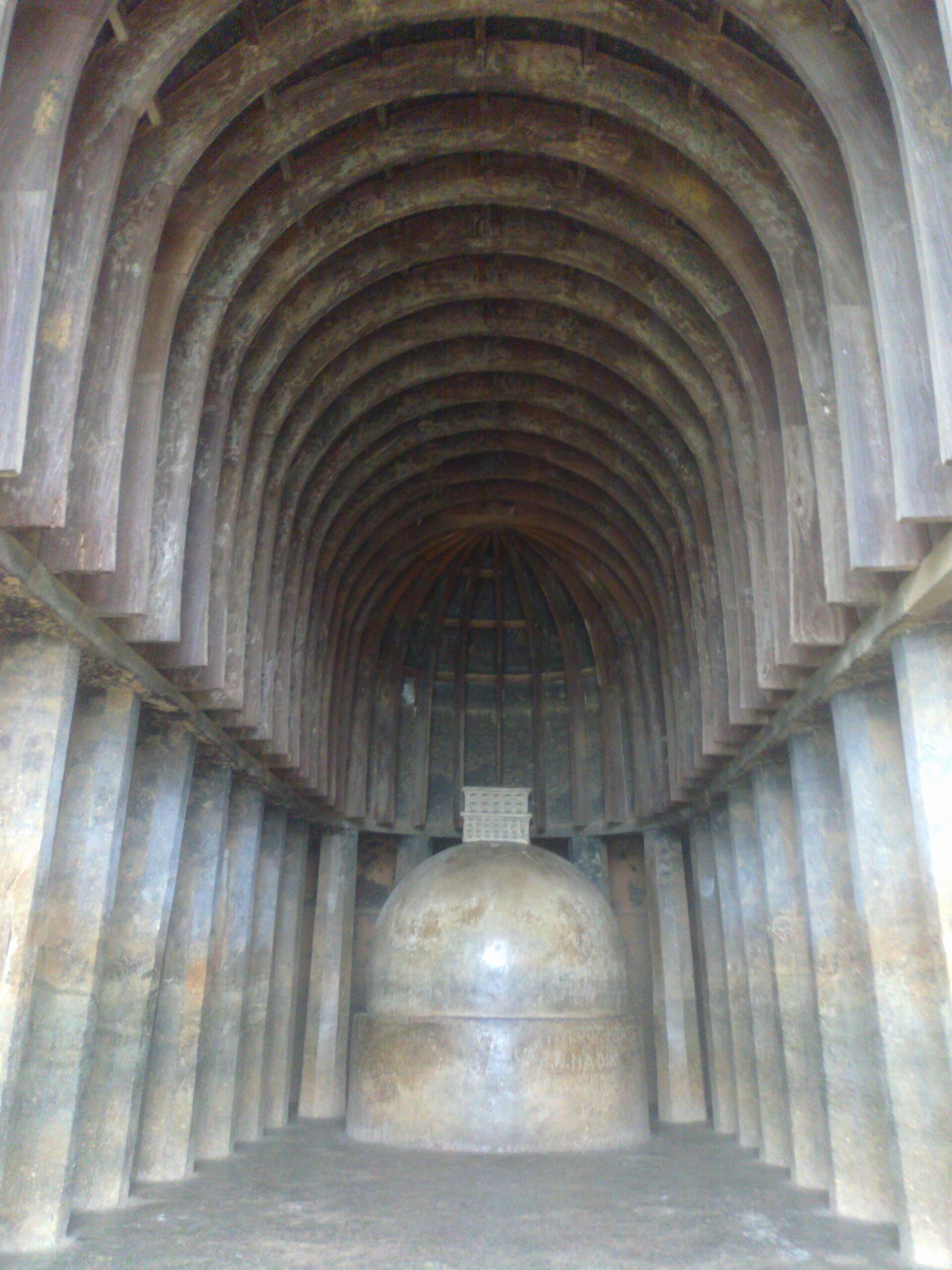
A chaitya, chaitya hall, chaitya-griha, or chaitya refers to a shrine, sanctuary, temple, or prayer hall in South Asian religions. The term is most common in Buddhism, where it includes a stupa at one end. The chaitya is the stupa itself, and the Indian buildings are chaitya halls, but this distinction is often not observed. Outside India, the term is used by Buddhists for local styles of small stupa-like monuments in Nepal, Cambodia, Indonesia, and elsewhere.
In the historical texts of Jainism and Hinduism, including those relating to architecture, chaitya refers to a temple, sanctuary, or any sacred monument. Most early examples of chaitya that survive are Indian rock-cut architecture. Scholars agree that the standard form follows a tradition of free-standing halls made of wood and other plant materials, none of which has survived. The curving ribbed ceilings imitate timber construction. In the earlier examples, timber was used decoratively, with wooden ribs added to stone roofs.
At the Bhaja Caves and the “Great Chaitya” of the Karla Caves, the original timber ribs survive; elsewhere marks on the ceiling show where they once were. Later, these ribs were rock-cut. Often, elements in wood, such as screens, porches, and balconies, were added to stone structures. The surviving examples are similar in their broad layout, though the design evolved over the centuries.
The halls are high and long, but rather narrow. At the far end stands the stupa, which is the focus of devotion. Parikrama, the act of circumambulating or walking around the stupa, was an important ritual and devotional practice, and there is always clear space to allow this. The end of the hall is thus rounded, like the apse in Western architecture. There are always columns along the sidewalls, going up to the start of the curved roof, and a passage behind the columns, creating aisles and a central nave and allowing ritual circumambulation or pradakhshina, either immediately around the stupa, or around the passage behind the columns.
On the outside, there is a porch, often very elaborately decorated, a relatively low entranceway, and above this often a gallery. The only natural light, apart from a little from the entranceway, comes from a large horseshoe-shaped window above the porch, echoing the curve of the roof inside. The overall effect is surprisingly similar to smaller Christian churches from the Early Medieval period, though early chaityas are many centuries earlier.
Vihara – Place of Residence
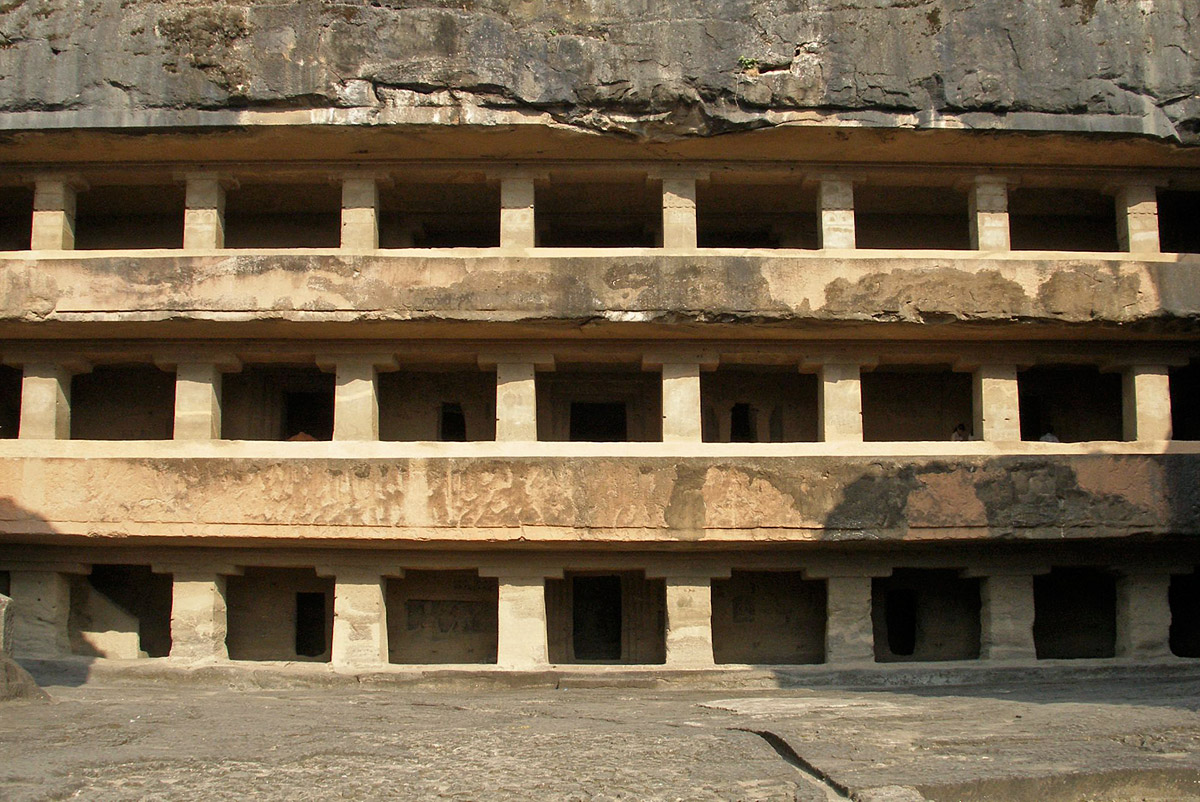
Vihara generally refers to a monastery for Buddhist renunciates. The term evolved into an architectural concept wherein it refers to living quarters for monks with an open shared space or courtyard, particularly in Buddhism. The term is also found in Ajivika, Hindu, and Jain monastic literature, usually referring to the temporary refuge for wandering monks or nuns during the annual Indian monsoons.
In modern Jainism, the monks continue to wander from town to town except during the rainy season (Chaturmas), the term “vihara” refers to their wanderings. Vihara hall has a more specific meaning in the architecture of India, especially ancient Indian rock-cut architecture. Here it means a central hall, with small cells connected to it sometimes with beds carved from the stone. Some have a shrine cell set back at the center of the back wall, containing a stupa in early examples, or a Buddha statue later.
Typical large sites such as the Ajanta Caves, Aurangabad Caves, Karli Caves, and Kanheri Caves contain several Vihara. Some included a chaitya or worship hall nearby. The Vihara was originated to be a shelter for Monks when it rains.

